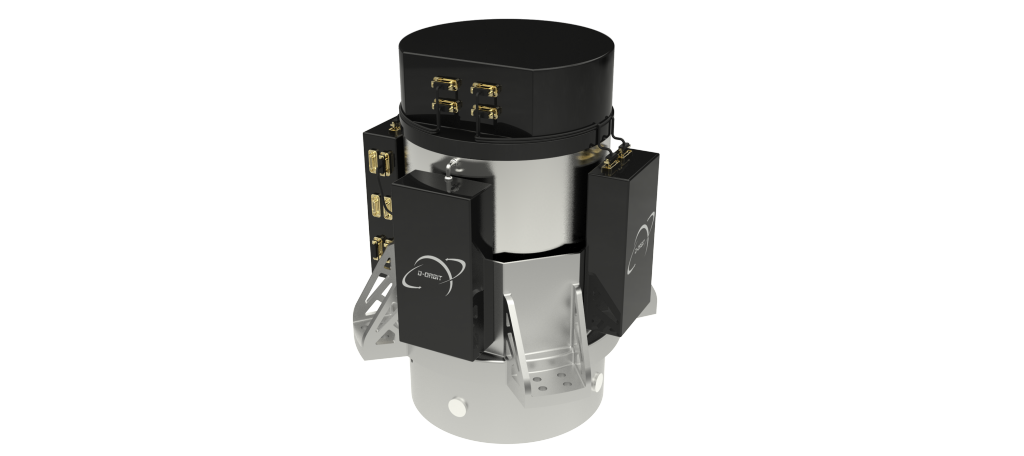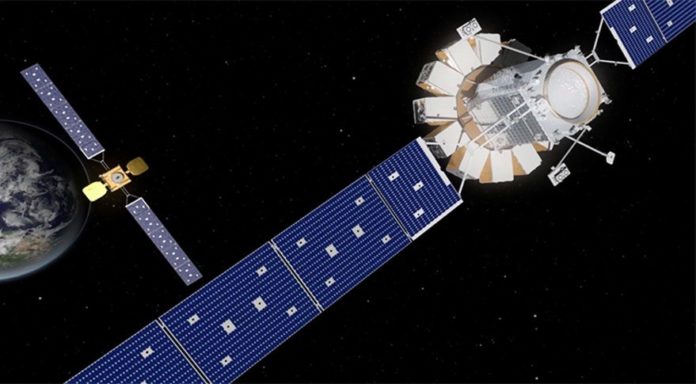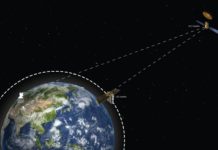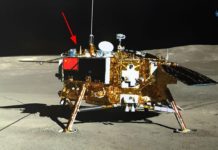China is developing a space-tug which will be used in orbit to assist with the safe disposal of satellites after their fuel has run out, according to Chinese news agency Xinhua.
The spacecraft, which will take up to 2 years to develop, will utilize a robotic arm to dock with the target satellite before using the tug’s own fuel to raise the orbit of the target, therefore extending its operational lifetime.
According to the designer of the tug, the spacecraft will be more efficient than its foreign counterparts because the foreign projects focus on in-orbit refuelling of the target vehicles, whereas the Chinese vehicle will use its own fuel to raise the target to the required orbit.
The news agency makes no mention of how the tug will refuel itself, so how this system will be more efficient remains unclear.
Extending the lifetime of satellites (or decommissioning them safely) is an active area of research right now, all over the world. Satellites are incredibly expensive to design, build and launch so extending the lifetime of these assets makes economic sense. Additionally, the topic of space debris is a hot one, so safe disposal of said assets is also of paramount concern.
In this article we will take a look at some of the options that researchers around the world are working on in terms of extending operations/safe disposal.
On-orbit Refuelling
As mentioned previously, extending the lifetime of satellites is one approach that various agencies are looking at.
NASA has been looking at this approach for a few years now with their RRM project (robotic refuelling mission).
The RRM aims to send a robot to berth with the target vehicle before unscrewing the fuel cap and transferring the fuel from the robot’s fuel tank into that of the satellite, and thus enabling the satellite to manoeuvre under its own steam.
So far, the RRM project has utilised the DEXTRE robot on the ISS to test and develop the methods required for on-orbit inspection and refuelling, and so far has managed to open a fuel cap on a test board that was sent to the ISS specifically for the task.
NASA hopes that this project will eventually develop into a means for refuelling and even repairing satellites in GEO, which is currently inaccessible to humans.
You can read more about the RRM project, which is currently on Phase 3, at this link.
Graveyard Orbit
Satellites in GEO do not deorbit as quickly as those in LEO, largely due to the higher altitude of satellites in GEO (more distance to deorbit) and the lack of differential drag from atmospheric particles in GEO.
As a result, it requires significantly higher delta-v to deorbit a satellite from GEO than it does to raise the orbit to a less crowded region (also known as a graveyard orbit). How much delta-v? It needs a change in velocity of approximately 1500 m/s to deorbit from GEO compared to 11 m/s to raise the orbit to the graveyard. It’s a no-brainer. Less delta-v means less fuel. Putting satellites into a graveyard orbit makes sense in terms of economics. Once the dead satellite has been moved out of its GEO slot, the valuable slot becomes vacant and another satellite can take its place and begin generating revenue for the operator.
Unfortunately, GEO satellites tend to be run until they are empty or until they cease functioning (because they are extremely good at making money), and so they often unable to boost their own orbits at the end of their lifetime.
One such project in development is the MRV (Mission Robotic Vehicle) from Orbital ATK. The MRV is a spacecraft equipped with a robotic arm and several Mission Extension Pods. The vehicle can either berth with a dead satellite and manoeuver it into a new orbit with its own propulsion, or else it can affix the MEP to the satellite with its robotic arm, and send the satellite to the graveyard orbit utilising the propulsion system onboard the MEP.
Orbital ATK has sold 2 units of the current version of the robotic craft, named the MEV (Mission Extension Vehicle) to Intelsat and plan to launch the first later this year. The more advanced MRV, which is based on the MEV is slated to be flight-ready by 2022.
De-Orbit
The previous two strategies are aimed at extending the life or disposing of satellites in GEO. But while GEO is prime real estate with limited slots, LEO is getting much more crowded.
For this reason, de-orbiting the satellite is preferable in this case. Different solutions exist for this strategy ranging from space-tugs (which clamp onto the satellite and bring it into the atmosphere for a controlled re-entry and destruction) to separate modules which can be placed onto the satellite at launch and can be activated from Earth to slow its orbital velocity, causing it to re-enter at will.
One example of the latter method comes from Italian company D-Orbit, who have designed a range of these pods. The pods, dubbed the D3 range, vary from LEO, to MEO and even GEO capabilities and can either raise or lower the orbit depending on the requirements.
The D3 LEO model, for example, is installed on the satellite before launch, and when it is time for disposal, a command is sent to the satellite which then ignites the solid propellant on the pod, causing it to deorbit.
A D3 prototype has already been demonstrated in orbit aboard the D-Sat mission in 2017.

We have looked at three very different approaches to mission extension and end of life disposal. Obviously which method is chosen will depend on the individual satellite in question. Some satellites will not be serviceable and will require safe disposal, while others will benefit from life extension. There is no one-size-fits-all solution in this game, so having a variety of options is paramount.







